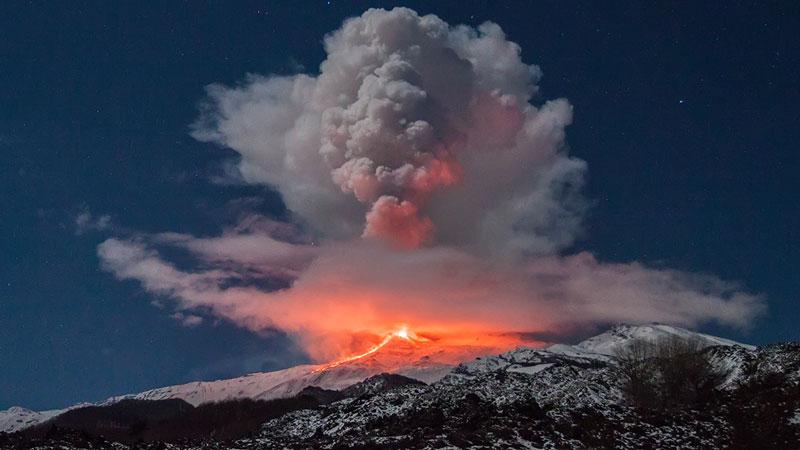Explosive observations - mitigating the hazards of volcanic ash
Volcanic eruptions are a global phenomenon. For example Mount Etna, the most active volcano in Europe, has been in a state of eruption since 2011. Particularly intense and explosive period of activity began in September 2019, becoming much stronger in February 2021. However, not all volcanoes have the required instruments nearby to detect these eruptions, nor their volcanic ash plumes. It is sometimes difficult to observe the eruptions using for example weather satellite imagery, since multiple layers of clouds can limit the view of the volcanic ash cloud itself.
Explosive volcanic eruptions produce ash that endangers aviation and infrastructure
Volcanic ash is both easily convected upward within the plume and carried downwind for very long distances. As it falls out of suspension, it can potentially affect communities across hundreds, or even thousands, of square kilometers.
Ash fallout to the ground can pose significant disruption and damage to buildings, transportation, water and wastewater, power supply, communications equipment, agriculture, and primary production leading to potentially substantial societal impacts and costs. Additionally, fine-grained ash can cause health impacts to humans and animals. (Source)
Airborne volcanic ash is a major hazard in aviation. Aircraft encounters with ash clouds can diminish visibility, damage flight control systems, and cause jet engines to fail. Air traffic controllers and pilots must be quickly notified of volcanic eruptions to avoid volcanic ash clouds. (Source)
One area with tremendous progress over the recent years is the provision of information related to the presence of volcanic ash in the atmosphere. In aviation applications, the international airways volcano watch has been implemented with its regional volcanic ash advisory centers ensuring a continuous, quasi-global watch- These centers issue, as required, volcanic ash advisories, which provide information concerning the presence of volcanic ash in the atmosphere and their expected future movements.
The disruption to European air traffic after the Eyjafjallajökull and Grimsvötn volcanic eruptions in Iceland in 2010 and 2011 indicated the need for routine tracking of the vertical profile of aerosols using lidar technology. Remote sensing with a lidar ceilometer is a cost-effective and accurate way to measure the vertical atmospheric profiles and to improve understanding of current and near future weather conditions.
Lidar ceilometers have improved over the recent years and now offer the opportunity to continuously monitor the vertical profile of aerosols, including volcanic ash and the mixing layer height with exceptional accuracy.
Redefining operational vertical profiling
Depolarization measurement of Vaisala Lidar Ceilometer CL61 provides data enabling the tracking of volcanic ash plumes, which can have significant effects on communities and their economies.
This state-of-the-art ceilometer breaks through the ceiling to deliver high-quality profiling data that provides the insights needed to improve not only track particles such as smoke, volcanic ash, or sand plumes, but also numerical weather prediction (NWP) models, as well as understand icing conditions.
CL61 leverages Vaisala’s unparalleled weather intelligence technologies to deliver uninterrupted, comprehensive, round-the-clock profiling data – even in the harshest weather conditions – for improved understanding of atmospheric conditions. The data provided by the instrument can be used to correct air quality modeling, provide data verification, and enable nowcasting for safer air travel and operations. CL61 also features enhanced single-lens optics, significantly improving signal-to-noise ratio, to provide high-resolution backscatter profiles – all in a cost-efficient design.


Add new comment